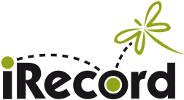Thank you for your interest in the Oxfordshire Rookeries Survey. Please read all the information below before submitting your rookery data.
To benefit fully from this survey we strongly recommend that you use when logged into iRecord (althought the form can be used without being logged in). Please use iRecord to submit sightings of any other species while surveying. To register with iRecord please click here. Once registered and logged in, goto Record-My forms and search for the OOS Rookeries Survey form and add it as one of your favourites. It will then appear under your Record-My forms menu.
To go directly to the Oxfordshire Rook Survey recording form, please click here.
The Oxfordshire Rookeries Survey was originally going to run for just 2013; however, it was noted following the nesting season of 2013 that there were large gaps in the county where no rookeries were recorded. These large gaps are likely to be due to under-recording rather than a reflecting a genuine absence of rookeries. Therefore, it has been decided to extend the survey into 2014 in order to cover these areas, as well as rechecking the numbers of nests present in the rookeries recorded in 2013 (and where possible to record addition information such as the tree species in which nests are located).
The gaps in probable coverage are present for a few miles either side of the A4074 between Wallingford and Reading, to the east of Benson, around Horspath, to the north of Banbury, and the north-western part of Oxfordshire. A Google Earth file can be provided on request (see email address below) showing the locations of rookeries that were recorded in 2013 in order to highlight areas that require checking.
The aims of the Oxfordshire Rookeries Survey are the same as for 2013, which are to:
- Count the number of nests in all rookeries within the county;
- Record the locations of the rookeries;
- Provide an estimate of the current breeding population of Rooks in Oxfordshire.
In order to achieve the above aims please follow the survey protocols stated below as closely as possible and then enter the data on this webpage:
- Rookery data can be entered on this website between February and June 2014; however, the most profitable time to gain an accurate count of the nests within a rookery is between the 15th and the 30th April. (These dates have been selected as all nests should be complete and in use, and the trees should not yet be in full leaf and therefore should not obscure too many nests). If a nest has been noted prior to the second half of April, if at all possible please make a return visit between these two dates in order to gain a more accurate count.
- Groups of nests more than 100m apart should be treated at separate rookeries. (Therefore a rookery could be spread out over a relatively large area, or an area containing a large number of nests could comprise a number of rookeries).
- It is not necessary to differentiate between occupied and unoccupied nests. (Differentiating can be difficult and time-consuming).
- Generally, a single nest in an isolated tree is likely to belong to Carrion Crow; nevertheless single Rook nests can occur.
- Please provide a count of the total number of nests in the rookery. We would recommend trying to obtain a count from several different viewpoints to confirm your count is correct.
- It may be impossible to count nests in conifers; however, please make an estimate based on the number of nests visible and best judgement.
- Although not essential to the survey, we are also very interested in which tree species the rooks nest are located in. Please bear in mind that not all nests in a rookery occur in the same tree species. (A survey undertaken of the Oxford area in 1928 found that 90% of local nests were located in Elm. The 2013 survey found that Ash was the most frequented tree species (constituting 34% of the tree species used). Therefore it is hoped that the 2013-14 survey will provide useful data to assess the impact of the Ash dieback fungus (should it spread) on rooks should a repeat survey be undertaken in the future).
The data collected as part of this survey will be shown in iRecord reports, will be passed onto the BTO, and following the completion of the survey the results will be collated, analysed and a report produced. This report will be summarised in the OOS (Oxfordshire Ornithological Society) bulletin, emailed to you if requested, and disseminated elsewhere as appropriate. If you would like a copy of the report and/or have a query regarding the survey please email at oxfordshirerookeries[at]yahoo.co.uk
